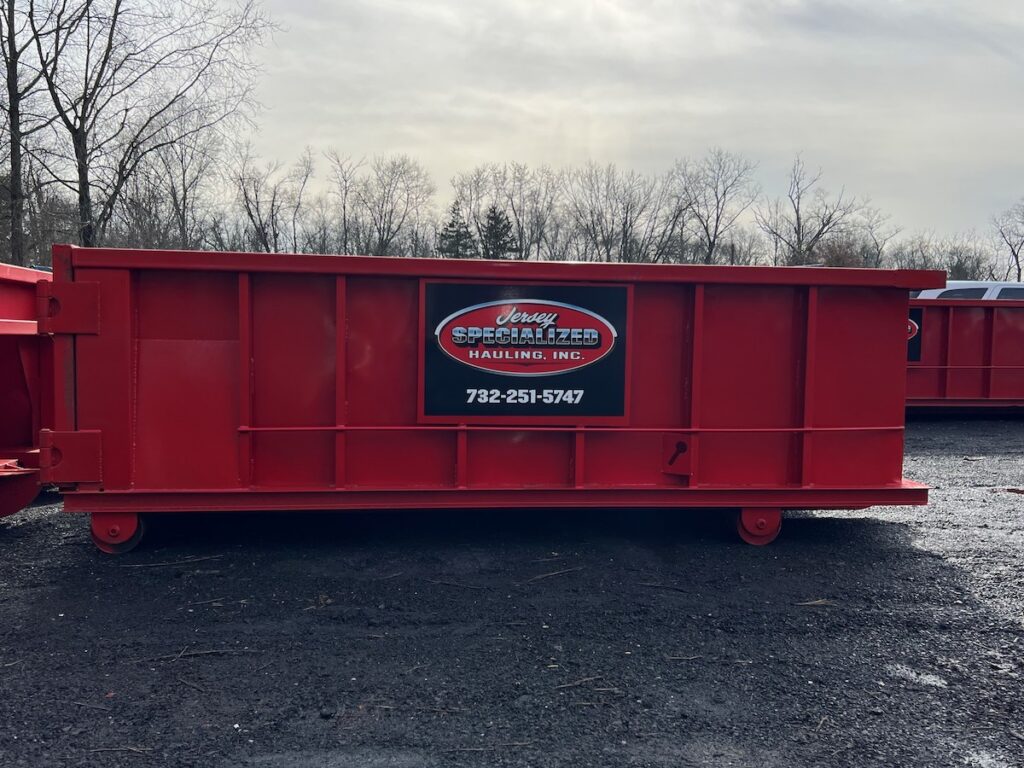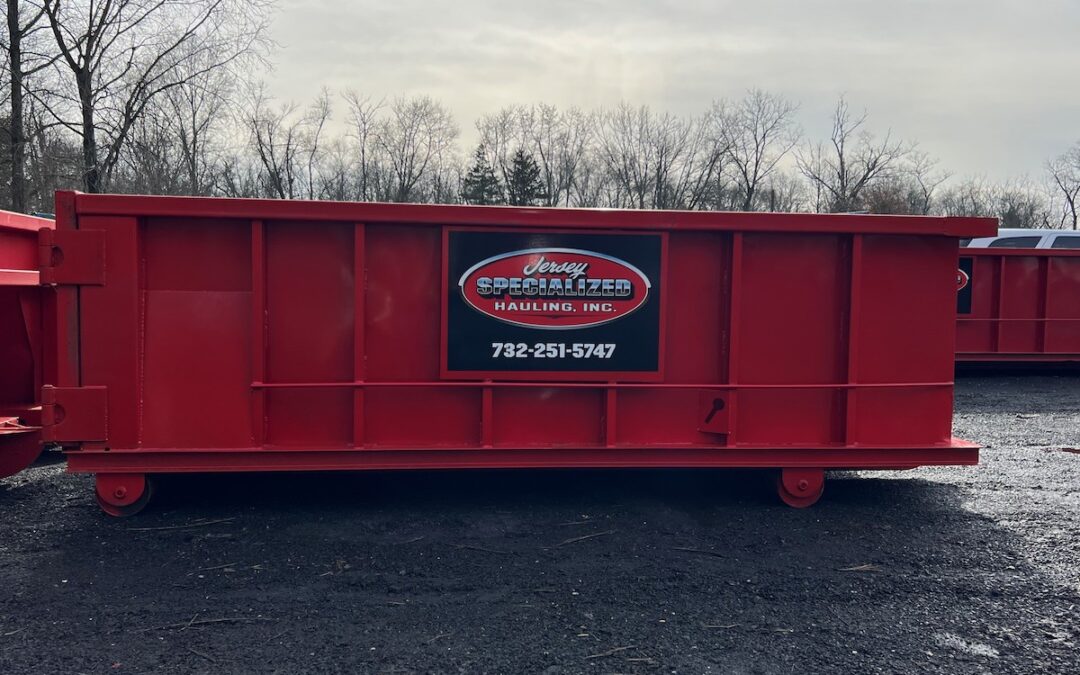Loading a dumpster might not sound like a risky task, but without proper precautions, it can quickly become hazardous. Whether you’re decluttering your NJ home, managing a construction project, or tackling a big landscaping job, understanding safety protocols can protect you and those around you from injuries or accidents. Let’s break down some essential safety tips to ensure that loading a dumpster is as safe as it is efficient.
How to Stay Safe When Loading a Dumpster in NJ
1. Choose the Right Location
Before loading begins, proper dumpster placement is critical. Position it on level ground, away from traffic, power lines, or overhanging branches. Uneven or unstable placement can cause the dumpster to tip over or become difficult to access safely.
Pro Tip: Use cones or barricades to clearly mark the area around the dumpster to avoid accidental collisions or interference from vehicles or pedestrians.
2. Wear the Right Gear
Personal Protective Equipment (PPE) can make a big difference in your safety. Here’s what to wear:
- Gloves: Protect your hands from sharp objects, splinters, or hazardous materials.
- Safety Glasses: Prevent dust or debris from entering your eyes.
- Closed-Toe Shoes or Steel-Toed Boots: Protect your feet from falling objects or stepping on sharp materials.
- Dust Mask: Useful if you’re dealing with materials that produce fine particles, like drywall or insulation.
Think of it as your superhero outfit—practical and potentially lifesaving!
3. Inspect the Dumpster
Before using the dumpster, give it a quick inspection. Look for:
- Rusted or sharp edges
- Broken or malfunctioning lids
- Signs of pests or residue from hazardous materials
A pre-use inspection can save you from unpleasant surprises down the road.
4. Understand Weight Limits
Every dumpster has a weight limit. Overloading it can cause damage to the dumpster, make it difficult for removal trucks to transport, or even result in accidents if it tips over.
Check with your provider to understand the dumpster’s capacity, and always distribute weight evenly to maintain stability.
5. Be Mindful of Hazardous Materials
 Not all items are safe to toss into a dumpster. Common hazardous materials to avoid include:
Not all items are safe to toss into a dumpster. Common hazardous materials to avoid include:
- Chemicals (paint, solvents, pesticides)
- Batteries
- Flammable liquids
- Tires
- Electronics (e-waste)
These items often require specialized disposal. Improperly loading them can lead to environmental damage or safety hazards for waste handlers.
6. Use Proper Lifting Techniques
Loading a dumpster often involves heavy lifting, which can strain your back or muscles if not done correctly. Follow these tips:
- Bend your knees, not your back, when picking up heavy items.
- Hold objects close to your body to maintain balance.
- Ask for help with particularly heavy or awkward items—teamwork beats a strained back any day.
7. Organize Your Load
Haphazardly tossing items into a dumpster isn’t just inefficient—it’s unsafe. Here’s how to optimize your load:
- Large Items First: Place heavier, bulkier items at the bottom to create a stable base.
- Break Down Items: Disassemble furniture or large items to maximize space and reduce tripping hazards.
- Distribute Weight Evenly: Prevent tipping by avoiding heavy piles on one side of the dumpster.
8. Be Cautious of Sharp Objects
Broken glass, nails, and sharp metal edges are common hazards when loading a dumpster. Handle these materials with care:
- Wrap sharp items in cardboard or bubble wrap to minimize the risk of injury.
- Use tools like tongs or grabbers to pick up dangerous debris instead of using your hands.
9. Avoid Overfilling
An overfilled dumpster can be a recipe for disaster. Materials sticking out of the top or sides can fall and injure someone or create hazards during transportation.
Most dumpster rental companies have guidelines about how full their containers should be—stick to them to avoid fines and injuries.
10. Stay Alert
It’s easy to get caught up in the task at hand, but maintaining situational awareness is crucial. Keep an eye out for:
- Moving vehicles or equipment near the dumpster.
- Shifting items inside the dumpster as it fills.
- Other people working nearby—communicate to avoid accidents.
11. Plan for Disposal of Prohibited Items
Inevitably, you might come across items that aren’t allowed in the dumpster. Have a plan for handling these materials, whether it’s contacting a specialized disposal service or setting them aside for a hazardous waste drop-off event.
12. Close the Dumpster Properly
When you’re done for the day, ensure the dumpster is securely closed if it has a lid. This keeps out rain, animals, and unauthorized materials. A secure dumpster is also less likely to cause accidents when it’s moved or transported.
13. Teach Others the Ropes
If you’re working with a team, make sure everyone is on the same page about safety protocols. Briefing your team on proper techniques and what to watch out for can help avoid preventable accidents.
14. Know When to Call for Pickup
If your dumpster is full or nearing capacity, don’t delay calling for a pickup. Continuing to load an overly full dumpster can compromise safety and lead to unnecessary headaches.
Loading a dumpster safely boils down to preparation, awareness, and common sense. By following these tips, you can minimize risks and make the process smoother for everyone involved.

